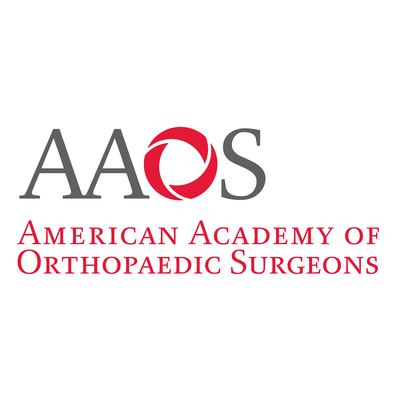Orthopaedic Surgeons See Opportunity to Further Education, Expand Clinical Use and Transform Quality of Care for Patients
ROSEMONT, Ill., Dec. 13, 2019 — (PRNewswire) — It is no secret that technology is transforming the healthcare industry at rapid speed. The idea of 3D printing a patient's specific fracture pattern or bone pathology on command seemed like science fiction just a few years ago; however, 3D printing technology is revolutionizing orthopaedic care and is making this process a reality today. In a new article published in the December issue of the Journal of the American Academy of Orthopaedic Surgeons (JAAOS), the authors offer an in-depth analysis of the latest 3D printing technology and explore its impact on patient care.
"3D printing is available to orthopaedic surgeons and is no longer just reserved for engineers and hobbyists," said lead author and orthopaedic surgeon Nathan Skelley, MD, medical director for Orthopaedic Research at Sanford Health in Sioux Falls, SD. "Advancements in 3D printing technology and greater availability have enabled uses for prototyping, customization, research, simulation, and so much more across the orthopaedic industry. 3D printing applications can have a positive impact on a patient's treatment in the clinic and in the operating room."
Like many innovations, 3D printers are becoming smaller, more affordable and more accessible to physicians. Free access to open-source 3D imaging software has made implementation of the technology widely feasible. Dr. Skelley and his co-authors note that advanced imaging studies, like CT scans, can be used to create 3D bone models, which can then be used to create custom orthopaedic guides, surgical simulations, and instruments. Similarly, they explored the various ways 3D printing technology has been associated with important improvements in education, preoperative planning, surgical care, prosthetics and patient-specific devices and treatments.
The review article further notes that 3D printed technology has been used across all fields of musculoskeletal health including arthroplasty, trauma, sports medicine, shoulder, hand, foot and ankle, oncology, spine, and pediatrics to simulate joint replacements, pelvic reconstructions, shoulder instability, fracture care, scoliosis correction, custom prostheses, and numerous other orthopaedic conditions.
"We no longer have to imagine complex anatomy or new devices using pencil and paper. With 3D printing, we can test approaches with simulated anatomy and interact more quickly with device innovation," noted Dr. Skelley.
Co-author and orthopaedic surgeon Matthew J. Smith, MD, FAAOS, FAOA, with University of Missouri, Missouri Orthopaedic Institute added: "3D technology truly is a game changer with results that can't be fully quantified at this time."
Together with their research counterparts, both Dr. Smith and Dr. Skelley have been exploring ways 3D printing technologies can help them practice better medicine. In one case, Dr. Skelley was able to print a model of a patient's shoulder and simulate different surgical techniques to determine a way to reduce and secure a dislocated collar bone without going through the typical musculoskeletal approach because that approach was affected by the patient's injury. With the help of the 3D printed models, he refined a surgical technique before going to the operating room. The same surgical technique has since been used by other surgeons and applied to other patients with excellent results.
A Healthy Future
The FDA released a
guidance document in December of 2017 to clarify its expectations for 3D printed devices. Importantly, the document explains that the FDA regulates manufacturer's claims regarding orthopaedic devices. It does not, however, directly regulate the clinical practice of medicine or orthopaedics. Therefore, the treating physician must take an active role in understanding the technology to appreciate the utility and limitations for 3D printed technology in patient care.
"Whenever new technology is developed, we need to approach it in a thoughtful, researched, and careful manner," added Dr. Skelley. "By doing so, we will develop a greater understanding of the potential for 3D printing technology and be better equipped to incorporate it appropriately into our practice and the clinical care of patients. In the future, I believe we'll start to see 3D printing focusing on regenerative medicine, joint preservation, and the ability to 3D print in biologic materials that have the potential to replace musculoskeletal tissues such as bone, cartilage, ligament, and tendon."
More information about the AAOS
Follow the AAOS on
Facebook,
Twitter and
Instagram
Follow the conversation about
JAAOS on Twitter
![]() View original content to download multimedia:
http://www.prnewswire.com/news-releases/advancements-in-3d-printing-technology-bring-promise-to-orthopaedic-care-300974450.html
View original content to download multimedia:
http://www.prnewswire.com/news-releases/advancements-in-3d-printing-technology-bring-promise-to-orthopaedic-care-300974450.html
SOURCE American Academy of Orthopaedic Surgeons
| Contact: |
| Company Name: American Academy of Orthopaedic Surgeons
Deanna Killackey, 847-384-4035 Email Contact OR Lauren Riley, 847-384-4031 Email Contact Web: http://www.aaos.org |



